Insights into the Great Australian Bight gained through marine geology and benthic ecology studies
Andrew Ross A H , Alan Williams B , Asrar Talukder A , Joanna Parr C , Christine Trefry A , Richard Kempton A , Charlotte Stalvies A , Richard Schinteie D , Ashley Ezzy E , Andrew Kulpecz F , Carole Schaefer G and Phil Rarey EA CSIRO Energy, 26 Dick Perry Avenue, Kensington, WA 6151, Australia.
B CSIRO Oceans and Atmosphere, Castray Esplanade, Hobart, Tas. 7000, Australia.
C CSIRO Minerals, 14 Julius Avenue, North Ryde, NSW 2113, Australia.
D CSIRO Energy, 11 Julius Avenue, North Ryde, NSW 2113, Australia.
E Chevron Australia Pty Ltd, 250 St. George’s Terrace, Perth, WA 6000, Australia.
F Chevron North American Exploration and Production Co. 1400 Smith Street, Houston, TX 77002, USA.
G Chevron Europe, Eurasia and Middle East Exploration and Production Ltd,1500 Louisiana Street Houston, TX 77002, USA.
H Corresponding author. Email: Andrew.Ross@csiro.au
The APPEA Journal 58(2) 845-851 https://doi.org/10.1071/AJ17240
Accepted: 29 March 2018 Published: 28 May 2018
Abstract
While the Great Australian Bight (GAB) represents one of the most prospective deep water basins in Australia, its vast geographic extent and deep sedimentary sequences remain poorly characterised. Recently, multidisciplinary research has been conducted to better characterise the continental and abyssal slope of the Ceduna Sub-basin.
The Great Australian Bight Deepwater Marine Program (GABDMP) aimed to build a regional understanding of the deep water GAB marine geology and benthic ecology. This three-year research program encompassed four research voyages that aimed to sample and characterise deep water outcropping facies, volcanic seamounts, potential seeps and their associated biological communities. These voyages used a variety of equipment to achieve the research goals and included the deployment of autonomous underwater and remotely operated vehicles and a seafloor coring system. Numerous sites across the Ceduna Sub-basin from 700 to 5501 m water depth were studied. Sampling operations collected over 2.8 tons of rocks, 148 m of core, 55 698 biological specimens and 48 097 km2 of mapping data. Nearly 4000 geological samples have been analysed to date. This paper will summarise the key findings from the GABDMP and the geological and biological insights that have been revealed through this multidisciplinary research program.
Keywords: autonomous underwater vehicle, benthic ecology, Bight Basin, Ceduna Sub-basin, fauna, Great Australian Bight, Hammerhead Sequence, outcrop, regional studies, remotely operated vehicle, seafloor drill, seeps, volcanic seamounts.
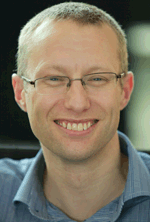
Andrew Ross is a research scientist based at CSIRO. He leads research projects focussed on marine geology, the development of new hydrocarbon sensor devices and baseline and oil spill monitoring. He and his team have been involved in seeps surveys both in Australian basins and in the Gulf of Mexico. More recently he has commenced a series of research projects to characterise the geology of the GAB. Dr Ross joined CSIRO in 2004 and has qualifications in marine biology, oceanography and petroleum geoscience. |
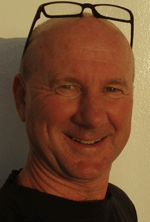
Alan Williams completed his PhD in Biology at Murdoch University in 1989. He has been a professional marine scientist since then and an employee of CSIRO for the last 26 years where he is now a Principal Research Scientist. |
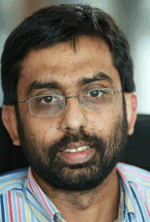
Asrar Talukder is senior research scientist at CSIRO. He completed his PhD at the University of Granada in Spain in 2003. From 2004 to 2007, he worked as Postdoctoral Research Fellow at the GEOMAR – Helmholtz Centre for Ocean Research at Kiel, Germany. During his postdoctoral work, Asrar worked on the gas hydrate deposit mechanisms on the Pacific Margin offshore Centre America. In late 2007, he jointed CSIRO Energy based in Perth. Asrar’s main research interest is submarine natural seep plumbing systems, seabed processes associated with the seeps, including submarine landslides, and how hydrocarbons migrate from seeping points on the seabed to the sea surface. |
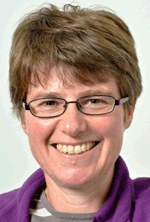
Joanna Parr gained her PhD in 1988 (University of Wales) on the genesis of ore deposits in a Proterozoic volcanic sequence in central Sweden. After a Postdoctoral position at Newcastle University (NSW) she joined CSIRO as a Research Scientist specialising in modern ore-forming environments. She now leads the Ore Deposit Geology Group in the Discovery Program of CSIRO Mineral Resources. Joanna is the Honorary Secretary of the Geological Society of Australia and is also a member of the London Geological Society, the Society of Economic Geologists and the American Geophysical Union. |
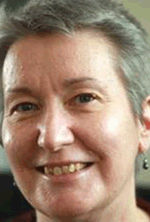
Christine Trefry is a research scientist with the CSIRO Energy business unit and is currently a Database Manager/Data Manager/GIS Officer. She works developing Microsoft Access databases for various groups within the business unit, as well as managing the data holdings from different projects. Prior to this she held positions with a local government council in Perth and the Northern Territory Government as an Information Technology Support Officer. |

Richard Kempton is a senior research scientist with the CSIRO Energy business unit and is currently leading the Petroleum Systems team. He has more than 15 years’ experience in fluid inclusion research with CSIRO and undertakes charge history analysis for industry and government organisations. Prior to this, Richard held a positon with Queensland Gas Co. Richard has a BSc (Hons) (Melbourne University) and a PhD (University of Western Australia) in Geology. He is a member of PESA and the Geological Society of Australia. |

Charlotte Stalvies is a Senior Experimental Scientist with the CSIRO Energy business unit. Since joining CSIRO in 2008, Charlotte’s work has focussed on establishing best-practise approaches to hydrocarbon sampling in marine environments, investigating natural hydrocarbon seepage as well as oil spill preparedness, response and monitoring. As a result, Charlotte has led the design and implementation of sampling campaigns in the Gulf of Mexico, Perth Basin, Timor Sea and GAB. Charlotte has a Geology degree (BA) from the University of Oxford (UK) and is a member of PESA. |
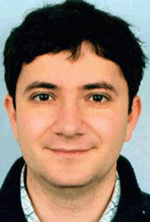
Richard Schinteie is a research scientist with the CSIRO Energy business unit. His principal research areas are organic and petroleum geochemistry, geobiology and sedimentology. Richard obtained a BSc (Biological Sciences), GradDipSci (Geology) and MSc (Geology) from the University of Auckland in New Zealand and a PhD (Earth Chemistry) from the Australian National University in Canberra. Prior to joining CSIRO, he was a Postdoctoral Research Fellow at the California Institute of Technology in Pasadena, USA. |
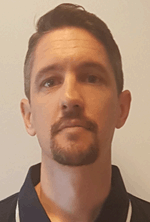
Ashley Ezzy is an exploration geophysicist within the Chevron New Zealand Exploration team. He was formally a Team Leader of the Great Australian Bight Exploration team for Chevron Australia Pty Ltd, Perth, a position he assumed in 2014. He completed his BSc at Curtin University of Western Australia and joined Chevron in 2008 after four years working on acquisition and processing projects with Veritas DGC. He is a member of PESA and the EAGE. |
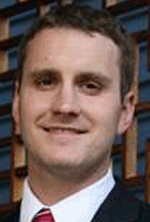
Andrew A. Kulpecz is an Exploration Advisor within Chevron North America Exploration and Production. He was formally the Team Leader of the Great Australian Bight Exploration team for Chevron Australia Pty Ltd, Perth, a position he assumed in 2016. He completed his BA in Geology from Wheaton College (IL) and MSc and PhD in Sequence Stratigraphy from Rutgers University. Andrew joined Chevron in 2008 as a Geologist and has worked on a variety of reservoir characterisation and exploration projects spanning Angola, offshore Newfoundland, Australia and emerging opportunities in the Russian/Norwegian Arctic. In 2014, he assumed leadership of Chevron’s Greater Gorgon Exploration team and was responsible for exploration activities in the Carnarvon Basin with a focus on delivering future growth for the Gorgon and Wheatstone liquefied natural gas projects. Throughout his career, Andrew has also been heavily involved in instructing Chevron classroom and field-based courses in clastic stratigraphy across the globe. He is a member of GSA, AGU and PESA. |

Carole Schaefer is an Exploration and New Ventures Manager for Chevron, currently based in Houston. As the Great Australian Bight Exploration Manager in Perth, Carole coordinated Chevron’s geologic evaluation of the Bight Basin and was instrumental in the initiation of the Bight Deepwater Marine Program with CSIRO. She is now managing Chevron’s exploration programs in the former Soviet Bloc countries. Carole joined Chevron in 1980 and has BSc degrees in Physics and Geophysics. |
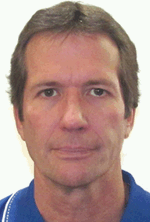
Phil Rarey joined Chevron in 1985 as an Earth Scientist working in multiple North America locations including the Alaska North slope, Beaufort Sea, Offshore California, Onshore California and the Gulf of Mexico. He spent 10 years working and living in West Africa in a variety of exploration and development leadership assignments in the deep water offshore areas of Namibia, Angola, Congo, DRC, Equatorial Guinea and Nigeria. This work included a leadership role in the elimination of routine gas flaring in many offshore areas of Africa. More recently he has held management exploration and development positions in north-west Australia. He is currently an Exploration Manager for Chevron Australia. Phil has BSc from the University of Colorado and a MSc in Geology and Marine Geophysics from Oregon State University. This work focussed on interpretation, seismic imaging and mapping of marine deposits. He has been a member of AAPG for 35 years and served as president of the Coast Geological Society. |
References
Baghurst, B., Lukatelich, R., Smith, D., Begg, G., Lewis, R., and Smith, R. (2017). Findings from the Great Australian Bight Research Program – an integrated study of environmental, economic and social values. The APPEA Journal 57, 388–392.| Findings from the Great Australian Bight Research Program – an integrated study of environmental, economic and social values.Crossref | GoogleScholarGoogle Scholar |
Reynolds, P., Holford, S., Schofield, N., and Ross, A. (2017a). Three-dimensional seismic imaging of ancient submarine lava flows: An example from the southern Australian margin. Geochemistry Geophysics Geosystems 18, 3840–3853.
| Three-dimensional seismic imaging of ancient submarine lava flows: An example from the southern Australian margin.Crossref | GoogleScholarGoogle Scholar |
Reynolds, P., Holford, S., Schofield, N., and Ross, A. (2017b). The shallow depth emplacement of mafic intrusions on a magma-poor rifted margin: An example from the Bight Basin, southern Australia. Marine and Petroleum Geology 88, 605–616.
| The shallow depth emplacement of mafic intrusions on a magma-poor rifted margin: An example from the Bight Basin, southern Australia.Crossref | GoogleScholarGoogle Scholar |
Reynolds, P., Holford, S., Schofield, N., and Ross, A. (2018). The importance of subsurface lithology in controlling storage v. eruption: an example from Southern Australia. Journal of the Geological Society , .
| The importance of subsurface lithology in controlling storage v. eruption: an example from Southern Australia.Crossref | GoogleScholarGoogle Scholar |
Rogers, P., Ward, T., van Ruth, P., Williams, A., Bruce, B. D., Connell, S. D., Currie, D. R., Davies, C. R., Evans, K., Gillanders, B. M., Goldsworthy, S. D., Griffin, D. A., Hardman-Mountford, N. J., Kloser, R. J., Middleton, J. K., Richardson, A. E., Ross, A., Tanner, J. E., and Young, J. (2013). ‘Physical processes, biodiversity and ecology of the Great Australian Bight region: a literature review’. (CSIRO: Hobart, Tasmania).
Ross, A., Williams, A., Talukder, A., Parr, J., Trefry, C., Kempton, R., Stalvies, C., Althaus, F., Kulpecz, A., Schaefer, C., and Rarey, P. (2017). Building the regional understanding of the deep-water geology and benthic ecology of the Great Australian Bight. The APPEA Journal 57, 798–805.
| Building the regional understanding of the deep-water geology and benthic ecology of the Great Australian Bight.Crossref | GoogleScholarGoogle Scholar |
Tanner, J. E., Beheregaray, L. B., Bodrossy, L., Hook, S., Oxley, A., Sasaki, M., van de Kamp, J., and Williams, A. (2017). Molecular assessment of biodiversity in the Great Australian Bight. GABRP Research Report Number 26, Great Australian Bight Research Program, October 2017, 161pp.
Totterdell, J. M., and Bradshaw, B. E. (2004). The structural framework and tectonic evolution of the Bight Basin. In ‘Eastern Australasian Basins Symposium II’. (Eds P.J. Boult, D.R. Johns, and S.C. Lang). pp. 41–61. (Petroleum Exploration Society of Australia: Perth, WA) .
Totterdell, J., and Mitchell, C. (2009). Bight Basin geological sampling and seepage survey: RV Southern Surveyor SS01/2007. Geoscience Australia Record 2009/24. (Geoscience Australia: Canberra, ACT).
Williams, A., Tanner, J. E., Althaus, F., Sorokin, S., MacIntosh, H., Green, M., Brodie, P., and Loo, M. (2017). Great Australian Bight Benthic Biodiversity Characterisation. Final Report GABRP Project 3.1., Great Australian Bight Research Program, GABRP Research Report Series Number 19, 361 pp.


